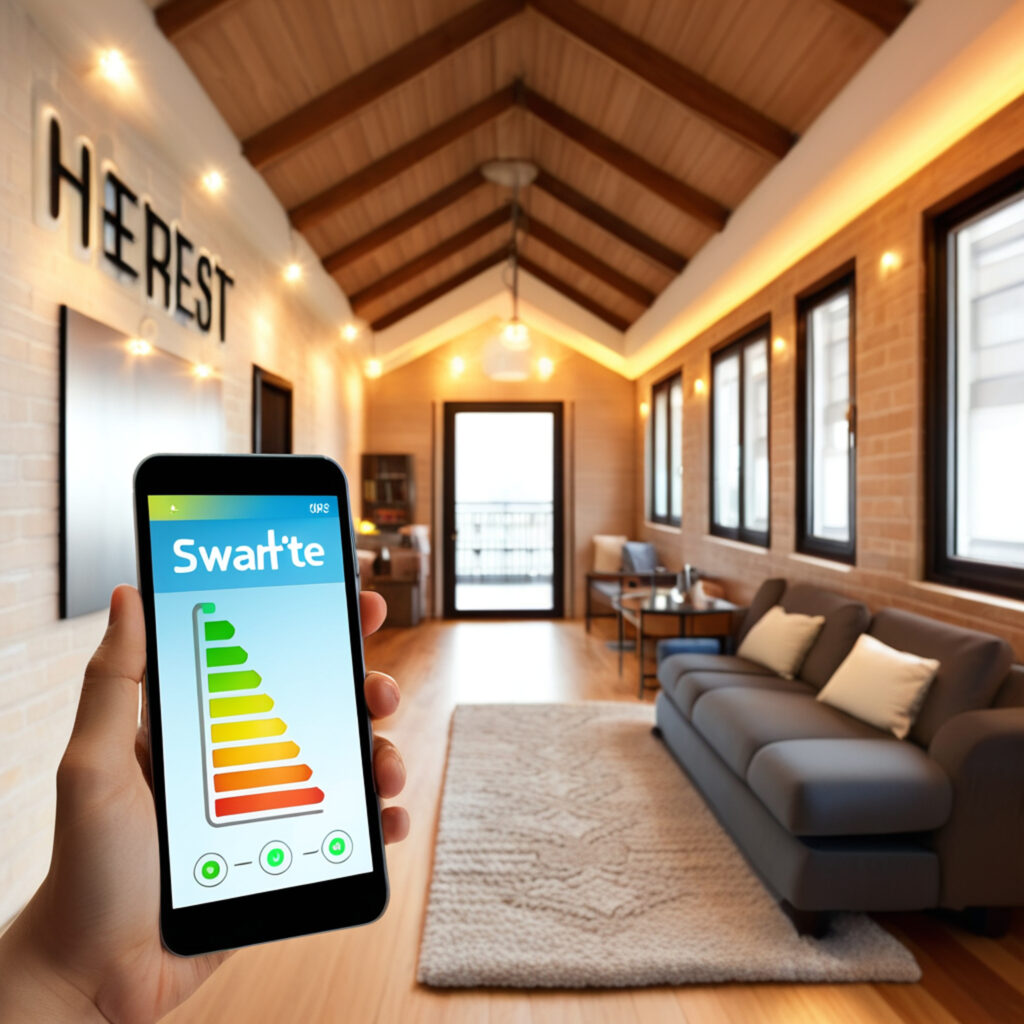The right basement heating options make a significant difference in spaces that naturally stay 5–15°F cooler than the rest of your home. Your basement’s below-ground location leads to more moisture retention and lower temperatures, which creates unique heating challenges.
Picking the right heating system needs careful thought. Low-profile installation becomes vital, particularly in finished basements where ceiling height is limited. On top of that, it must handle moisture well, spread heat evenly, and save energy. Many homeowners find ductless mini-splits to be their best option. These systems let you control temperatures in different zones separately and can substantially cut down your energy costs. A more budget-friendly choice could be portable space heaters that start at $40 and work great in smaller basement areas.
This piece will show you smart heating options that can help slash your energy bills and keep your basement comfortable throughout the year.
Why basements are harder to heat
Basements create unique heating challenges that make them hard to warm up properly. Research from the U.S. Department of Energy shows basements cause about 20% of a home’s total heat loss. This makes basement heating efficiency crucial for homeowners who want to cut their energy costs.
Lack of sunlight and insulation
Upper floors get plenty of sunshine, but basements barely see any natural light that could warm them during the day. Your basement stays cool no matter what the temperature is outside. The surrounding soil keeps temperatures low throughout the year, and heat moves from your warm basement into the cold earth.
Your basement’s construction might be the biggest problem. Most foundations use concrete, which soaks up moisture and cold from the ground around it. Cold seeps right into your living space if you don’t have proper insulation. Many homeowners face systemic problems because their basements didn’t get enough insulation when they were finished, which leads to cold spots and drafts.
Moisture and humidity issues
Moisture makes it extra hard to heat your basement. Low temperatures feel much colder than they actually are when you add dampness to the mix. Basements naturally collect more humidity because they sit underground.
Water droplets form when warm air touches cool basement surfaces, especially in summer when people open their basement windows. This creates an ongoing cycle of dampness, and you’ll often see a “ring of dampness” where the walls meet the floor.
Poor air circulation from the main HVAC system
Basic physics creates another challenge: hot air rises. Your thermostat might read a cozy 72°F, but the warmth from forced air systems or baseboard heaters floats up, leaving your basement nowhere near as warm. This stack effect pulls even more cold air through tiny gaps because it creates negative pressure downstairs.
Regular HVAC systems have a hard time heating basements properly. Most basement ductwork and vents might keep pipes from freezing, but they can’t make the space truly comfortable. Cold air gets trapped and sits there because it doesn’t move around enough, which makes your already chilly basement feel even colder.
What to look for in a smart basement heating system

Choosing the right basement heating system means understanding everything in below-grade spaces. After looking at various basement heating options, I found four crucial factors that make smart systems stand out from standard ones.
Energy efficiency and cost savings
Smart basement heating can cut your utility bills drastically. The U.S. Department of Energy reports that HVAC system zoning helps homeowners save up to 30% on typical heating bills. Ductless mini-split heat pumps are impressive – they work three times better than traditional HVAC systems. These systems produce more heat while using less energy.
Smart thermostats make things even better. They adjust settings based on who’s home and what the weather’s like, which stops unnecessary heating. You can also set up automatic schedules that turn the heat on just when you need it.
Zoning and temperature control
You can control temperatures in different parts of your basement with zoning features. This creates tailored comfort zones and heats only the spaces you use.
Your basement’s heating system needs its own thermostat zone. This stops the rest of your house from getting too hot. Basement-specific smart thermostats give you exact temperature control and scheduling options that cut energy use by a lot.
Low-profile and space-saving design
Traditional radiant floor systems can make your floor 1.5 inches higher – a real issue if your basement ceiling is already low. Ultra-thin radiant panels are a great alternative. They keep your headroom while heating well.
Wall-mounted options like electric panels and ductless mini-splits help save floor space. Modern electric wall heaters are just 3 inches thick but heat rooms evenly and powerfully.
Moisture resistance and safety
Quality heating systems built for basements resist moisture well. This helps them last longer and avoid damage.
Safety comes first with features like tip-over protection and automatic overheat shutoff. Carbon monoxide detectors are vital for gas-based systems. Electric radiant flooring heats efficiently without creating moisture problems or fire hazards.
8 smart basement heating options that reduce energy bills
Let’s look at eight proven basement heating solutions that cut energy costs while keeping you comfortable. These options stand out because they optimize performance and save money.
1. Ductless mini-split heat pumps
These all-in-one systems keep your basement comfortable year-round with heating, cooling, and dehumidification. They can save you hundreds each year compared to traditional systems, with efficiency ratings up to 25 SEER2 and 11 HSPF2. The ductless design eliminates any energy waste through leaky ductwork.
2. Hydronic radiant floor heating
This system keeps your feet warm and lets you turn down your thermostat to 68°F instead of 72°F, which cuts energy bills by about 10%. Hot water tubes under your floor deliver steady, even warmth that pairs perfectly with tile or stone finishes.
3. Electric radiant wall panels
These infrared heating panels convert nearly 100% of electrical energy into heat and warm objects directly rather than just heating the air. The wall-mounted design saves valuable floor space while providing zoned heating that reduces energy costs.
4. Electric baseboard heaters
Both convection and hydronic models give you control over individual heating zones. This targeted approach heats only the spaces you use, which cuts overall energy use.
5. Wall-mounted gas furnaces
These compact units come with modulating gas valves and variable-speed blowers that use just enough gas to heat the space. They track temperatures constantly and quickly restore warmth if heat escapes.
6. Floor-mounted room heaters
These efficient heaters run quietly on natural gas or propane without needing ductwork. Some models look like fireplaces with windows that show the flames.
7. Forced air extension from main HVAC
This affordable option taps into your existing heating system. The setup needs proper return airflow to avoid negative pressure issues with the first floor.
8. Portable electric space heaters
Portable heaters cost more to run long-term but are flexible and need no installation. They excel at spot heating in basement areas you use occasionally.
Installation tips to maximize efficiency

The quality of your basement heating system installation plays a vital role in energy efficiency. Your system’s performance and operating costs depend heavily on how well it’s installed.
Seal and insulate basement walls and floors
Your home loses about 25% of its total heat through the basement. Before installing any heating system, fix air leaks around windows, doors, rim joists, and foundation cracks. You can test moisture levels by taping plastic sheeting to concrete walls. Any condensation under the plastic shows moisture coming from the ground. Concrete floors need insulating underlayment beneath heating elements. This prevents heat loss downward and makes the system more efficient.
Use smart thermostats for zoning
HVAC zoning splits your home into different temperature-controlled areas. The system needs dampers in ductwork that control airflow by zone. Smart thermostats help manage basement heating on their own. This setup gives you exact temperature control in different basement areas and sends heat exactly where you need it.
Choose radiant-compatible flooring
Your choice of flooring material substantially affects heating efficiency. Ceramic tile and stone work best because they store and transfer heat well. Engineered wood and bamboo also make good choices for radiant systems. Keep carpet thickness at 2.5 tog rating or less so heat can transfer properly.
Avoid oversizing or undersizing the system
Systems that aren’t sized correctly waste both energy and money. Most furnaces require 30-60 BTUs per square foot, based on your climate. Remember to include your basement’s square footage when calculating the right system size.
Conclusion
Your specific needs, budget, and existing home infrastructure will determine the best basement heating solution. Smart heating options like ductless mini-splits and radiant floor systems are a great way to get both comfort and energy savings. You can cut your bills by 30% or more. These systems tackle common basement issues – persistent moisture, lack of natural sunlight, and poor air circulation from main HVAC systems.
A well-done installation makes the difference between average performance and great efficiency. Your heating system works best when you seal air leaks, add insulation, and pick compatible flooring. On top of that, smart thermostats give you precise control to avoid wasting energy in spaces you don’t use.
Most homeowners don’t think about their basements when upgrading for energy efficiency. This mistake costs hundreds of dollars each year in high utility bills. The secret is matching your system to your basement’s specific features and how you use the space. This applies whether you pick a permanent solution like radiant floor heating or go with flexible options like portable heaters.
Note that your basement accounts for up to 25% of your home’s heat loss. This makes it a perfect target for efficiency upgrades. Your basement needs its own heating strategy instead of just extending your main HVAC system downward. With the right heating solution, your cold, damp basement can become a comfortable, energy-efficient space that you’ll want to use all year long.
